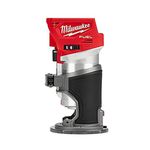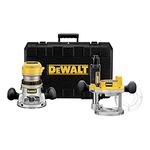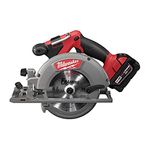Stacking Portable Tool-Storage System
Clear lids, open-top totes, and easy-locking connectors make Milwaukee's rolling Packout system an easy choice for job-site storage.

Let’s start with the basics: The three standard boxes have a 16-in. by 22-in. footprint and depths of 6 in., 11 in., and 20 in. Each of these boxes comes with some kind of interior tray or trays for smaller tools, bits, and blades. The largest sports wheels and an extendable handle and accepts other boxes on its top, hand-truck style. There are two sizes of organizer boxes, each with removable bins and clear lids. Unique to Milwaukee’s system are three sizes of open totes—10 in., 15 in., and 20 in. (not shown) and two soft-sided bags (not shown), which also lock onto the storage boxes. When loaded with tools, the largest box is too heavy to lift but easy to roll, thanks to its large wheels. Actually, that particular setup of mine took a fall down a set of stairs last summer and was no worse for wear afterward. The secondlargest box still holds a huge load of tools, and it has both a briefcase-style handle and a large, folding top handle.
I really like the box-to-box attachment system on the Packout. The single latch on the front of each box is easily operated, and the connection is secure enough to inspire confidence when you lift a stack. The boxes can be opened while they’re connected and are large enough to hold even full-size tools such as a worm-drive saw. I was surprised how much I liked the 15-in. tool tote, as I don’t usually like open-top tool storage . I’m also a huge fan of the clear lids on the organizer boxes and their removable interior bins. Milwaukee is now offering a shorter organizer with smaller bins, but I’m still hoping for more customizing options, such as router-bit inserts.
Kit Camp, a finish carpenter and teacher of middle- and high-school woodworking in Portland, Ore.
Photos: courtesy of Milwaukee
From Fine Homebuilding #280
Fine Homebuilding Recommended Products
Fine Homebuilding receives a commission for items purchased through links on this site, including Amazon Associates and other affiliate advertising programs.

Milwaukee Compact Cordless Router (2723-20)

DEWALT 2 1⁄4-hp Router Combo Kit (DW618PK)

Milwaukee M18 Fuel 18v Cordless Circular Saw (2730-22)


























View Comments
The system has caught my eye, but IMO the cases are massively overbuilt, which translates to ”heavy” while empty, never mind what they’ll feel like once loaded. I’m not a tall guy, so for me that’s not going to work. One thing I’ve noticed is that the way Milwaukee has achieved the burliness of their cases is through the use of double-wall construction, and that means the interiors are far less commodious than they appear from the outside, and all of the interior corners are radiused, not cleanly squared off, so full use of the interior is even more reduced and can be topsy-turvy for the contents.
In fact, as I consider the toll of hefting a heavy tool-laden case around a job site on an everyday basis and similarly through the finished spaces and the potential for damages to those spaces, I prefer the lighter weight L-Boxx or Tanos (Makita and Festool) systems. I take very good care of my hard-earned tools, so having something fly out of the back of a truck at 50mph is an unlikely scenario, but if a case takes a serious fall and breaks, then I’ll take my lumps and spend another $60 for a another lightweight replacement.
For others who are less finicky and tend to throw their kit around or who have a crew that shares or handles the tools, these might make sense. Nevertheless, I have to think that their massiveness and bruiser appearance invites rougher handling.